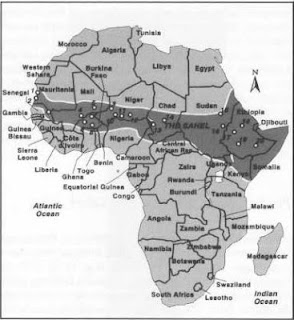"The high prices of basic foods are the most alarming feature of the current Sahel crisis, according to the Famine Early Warning Systems Network (FEWS NET) of the US Agency for International Development (USAID). Prices are expected to keep rising until the end of August - during the lean season - but the size of recent hikes has surprised food price analysts and humanitarian aid personnel." - IRIN humanitarian news and analysis
The food crisis in the Sahel, affecting some 18 million people, predicted by early warnings beginning in October 2011, is the result of multiple causes: drought, displacement of people and disruption of production due to conflict, and structural poverty combined with rising food prices that make existing food stocks too expensive for large sectors of the populations of the countries in the region.
As usual, the response by regional governments and international agencies is being justly criticized as too little, too late, and too focused on short-term emergency needs as compared with addressing long-term issues of agricultural sustainability and resilience to crises. Notably, however, these criticisms and attempts to change the patternare coming not only from outside commentators but also from within the agencies and governments themselves.
This AfricaFocus Bulletin contains a UN press release, two informative articles from the UN humanitarian information service IRIN, and the press release from the meeting of West African states on the crisis held in Lome, Togo, on June 6.
For more information of the Sahel region of Africa, click this link

No comments:
Post a Comment